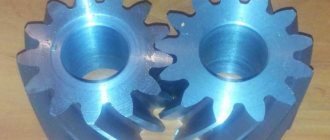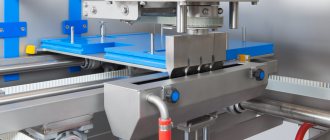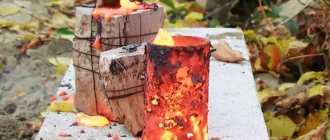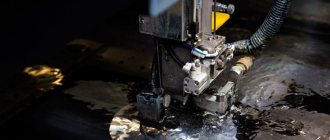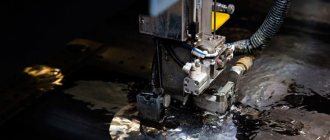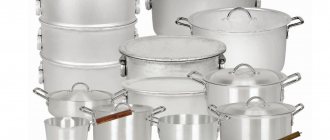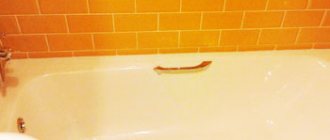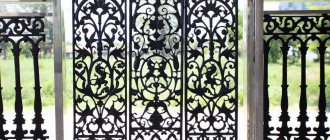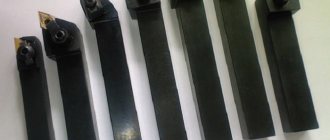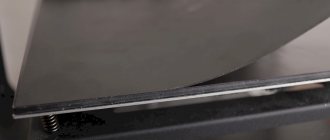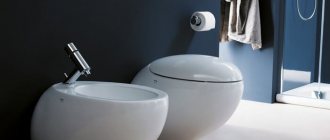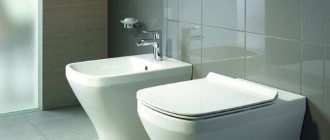The use of lost wax models is a fairly popular method of foundry production. The method is characterized by the complexity of the technological process and high labor costs for preparatory processes. Therefore, it is used where it is necessary to accurately maintain dimensions and ensure high surface quality of parts. This is how turbine blades and high-performance tools, dentures and jewelry, as well as sculptures of complex configurations are cast. The essence of lost wax casting is that the mold for casting is one-piece; the model made of low-melting materials is not removed during molding, but is smelted. This ensures careful adherence to dimensions and relief. The metal is poured into the cavity remaining from the model. Once cooling is complete, the mold is destroyed and the product is removed. When casting large series, the cost of the product is reduced.
Advantages of the method
The main advantage of lost wax casting is the thoroughness of the shape transfer and low surface roughness. In addition, there are other advantages:
- The production of parts from alloys that are weakly susceptible to machining is available.
- Reduces the need for further machining.
- Products are cast that otherwise would have to be made in parts and assembled together.
- With large series, a reduction in specific labor intensity (per one product) and its cost is achieved.
- Possibility of mechanization and partial automation of preparatory operations of the casting itself.
These advantages make the method one of the most popular and used in today's metallurgy, especially in combination with modern progressive casting methods.
Construction of wooden models
What is the difference between a model kit and a casting? Everything is very simple. The model has rod signs - protruding parts. To prevent the shape from being destroyed when removing the model, the vertical walls of the model are made with slopes (1-3 degrees). The model also has fillets and curves. Fillet - rounding of internal corners. Roundings - rounding of outer corners. Calculated using the formula:
where a,b are the thicknesses of the two walls.
The casting model must be larger than the casting by the amount of shrinkage.
Shrinkage is a decrease in the volume of metal during solidification. Just like castings, there must be an allowance for machining on the model.
Allowance is a layer of metal that is removed during machining. The largest allowance is assigned to the upper part of the casting, because it is the most polluted. When molding by hand, the allowance is always larger than when molding by machine. The model drawing is obtained from the part drawing by adding the above parameters (allowances, fillets, parting plane, parting surface, contours of rod marks).
Rice. 1 - detail drawing
Rice. 2 - casting drawing
Any model kits undergo a coloring operation. It takes place in several stages: primer, putty, varnishing and sanding. Why do you need to paint the model? This is necessary to protect against moisture, increase surface strength, reduce surface roughness, and also to reduce adhesion to the molding and core mixture.
Disadvantages of Lost Wax Casting
The undoubted advantages of the method, it would seem, should have ensured its dominance among other methods. However, despite the popularity of the lost wax casting method, disadvantages limit its widespread use. The main disadvantage is the complexity of the multi-stage technological process. It requires quite complex and expensive technological equipment for the preparatory stages. For simple products produced in small series, this method has a higher cost.
For the cost-effective use of lost wax casting, the advantages and disadvantages of the method are compared, and the decision on its choice is made based on an assessment of the price/quality ratio. Therefore, it is used mainly for the most critical and expensive products that are difficult to obtain in any other way, for example, turbine blades, sculptures, high-speed tools, etc. Another area of application is large-scale castings, where economies of scale make it possible to achieve significant cost reductions.
Plastic models
Plastic models are widely used in foundries. This is due to high corrosion resistance, lower weight, and greater strength than wood. The molding and core mixture sticks less to such models. Plastic models are easier and cheaper to make than any other. To make models, various plastics based on phenol-formaldehyde, polyester, and epoxy resins are used.
Thin-walled models are reinforced with stiffening ribs. Fillets are made at the junction of the stiffeners and the walls. Large thin-walled models are reinforced with wooden or metal elements.
Technology
Lost wax casting technology is a multi-stage production process that is relatively labor intensive. At the first stage, a master model is made; it will become the standard for the production of working models after all stages of the final product have been completed. For the production of master models, both special model compositions and traditional ones - plaster or wood - are used. The material of the master model must combine strength and ease of processing.
Further, the lost wax casting technology involves the creation of a mold into which all working models will be cast. Molds are made from plaster, rubber, silicone, and less often from metal. Structurally, it must be detachable and designed for repeated use. The mold is filled with a model composition, after it has hardened, it is disassembled and the next working model is removed.
When producing unique parts or small runs, the stages of creating a master layout and a mold are skipped, and a layout (or several) is made by molding the material by hand.
The next stage of the lost wax casting process is the production of a casting mold around the model (or block of models). These matrices are structurally non-separable and disposable, which allows for careful adherence to the dimensions and roughness of the product. In modern industry, two types of molds are used - traditional sand-clay molds for casting in the ground and shell molds - for the production of precise and expensive parts.
After the mold is completed, the model is melted out of it by heating or blowing with superheated steam. Shell forms are further strengthened by heating to 1000 ˚C.
The final stage of the process includes the actual pouring of the product, its cooling under natural conditions or using a special method in a thermostat, destruction of the mold and cleaning of the product. The method makes it possible to obtain high-quality castings weighing from several grams to tens of kilograms.
Method for making casting models
Use of the field of foundry, namely, in methods of making foundry patterns intended to produce foundry molds for metal castings. Essence: a method for manufacturing casting models includes forming the model material by manufacturing individual elements, gluing individual elements to obtain a workpiece and mechanical processing of the glued workpiece to the specified dimensions of the casting model. The material used for the model is a thermoplastic polymer based on styrene or its derivatives or its mixture with a powder filler containing up to 50% by volume, and the individual elements are manufactured in the form of standard elements, identical in shape and size, by pressing, while the mold is preliminarily heated, and the model material during the pressing process is used heated to temperatures, respectively, 1.8 - 2 and 1.8 - 1.9 higher than the Vicat softening temperature of the thermoplastic polymer used.
The invention relates to the field of foundry production, namely to methods for producing foundry models intended for producing foundry molds for metal castings. Metal castings (cast blanks) are closest in size and configuration to finished parts of machines and units, which makes it possible to quickly and at low cost produce parts of various sizes, geometric shapes and weights with high mechanical and performance properties. The quality of cast blanks, the accuracy and cleanliness of the surface, as well as the technical and economic indicators of their production largely depend on the quality of the casting model, the material and the method of its manufacture.
There is a known method for manufacturing casting models from polymer material according to (V.V. Vasiliev, B.P. Mashkov and others. Progressive methods for producing models, Donetsk: Donbass publishing house, 973, p. 18-2). This method includes making a master model from wood or plaster, obtaining a mold for casting the model from the master model (preferably the mold is made of gypsum), pouring a polymer material of a model compound based on epoxy resin in combination with fillers into the resulting mold, curing the epoxy compound with room temperature for 16-24 hours, removing the cured model from the mold, finishing the surface of the model (cleaning, correcting defects) and heat treating the model for approximately 60 hours (including exposure at 50oC for 24 hours). Models obtained from epoxy compounds according to the described method, have higher wear resistance compared to wooden models, have higher accuracy and do not require mechanical processing. They are not subject to warping, swelling, rotting, and are relatively easy to repair. The number of half-molds removed from epoxy models is about 2000 for manual molding. However, the manufacturing method for preparing epoxy models is lengthy and multi-stage, which reduces the technical and economic indicators of the process and increases the cost of the models themselves. A spent model in foundry production, as a rule, is not recycled. In addition, a serious disadvantage of this method is that the epoxy resins used have a harmful effect on the skin and mucous membranes of people working with them. The process is also complicated by the need to carefully prepare the components of the epoxy compound used, for example, moisture must be thoroughly removed from all components, the fillers must be dried to a moisture content of no more than 7% This is due to the fact that high humidity inhibits the curing of the compound. A manufacturing method is also known. casting models, including making a master model from wood or plaster, making a mold for casting the model based on the master model (preferably the mold is made from gypsum) and forming a model from a polymer material by pouring acrylic self-hardening plastic into the resulting mold, curing the acrylic plastic at 24oC in for 2-3 hours, removing the hardened model from the mold and finishing the surface of the resulting model, cleaning, correcting defects (V.V. Balabin. Model production. M: Mashinostroenie, 1970, pp. 146-154). Acrylic self-hardening plastics, used as model compositions, are obtained by mixing liquid and powder components, for example TS styracryl or ACT-T acrylate. Styracryl powder TS mixture of 99% copolymer of methyl mecrylate with styrene and 1% benzoyl peroxide; styracrylic liquid TS - a mixture of 99% methyl methacrylate and 1% dimethylaniline. Acrylate powder AST-T is a mixture of 97% polymethyl methacrylate, 1.5% zinc oxide and 1.5% benzoyl peroxide; ACT-T acrylate liquid is a mixture of 97% methyl methacrylic and 3% dimethylaniline. The model composition should be poured into the mold 10-15 minutes after mixing the components. The process according to the described method significantly reduces the production time of casting models due to the rapid curing of acrylic plastics and the absence of a long stage of heat treatment of the model. In addition, the acrylic self-curing plastics used are significantly less toxic than epoxy resins, which significantly improves working conditions compared to the process of making models from epoxy resins. The number of half-molds removed from a model made of acrylic plastics is about 800 (with manual molding). However, this method of producing casting models remains quite time-consuming, it is multi-stage and labor-intensive, and, in addition, models made of acrylic curable plastics after the end of their service life are practically not recycled from - due to the lack of technology for processing cured acrylic plastics. The closest to the claimed method in terms of the totality of essential features is a method for manufacturing casting models from wood, including drying wood, forming the model material (wood) by cutting lumber into blanks, planing and sawing (manufacturing) individual elements from blanks, gluing individual elements to obtain a model blank and mechanical (milling or turning) processing of the glued blank to the specified dimensions of the casting model, followed by finishing and painting the resulting model (V.A. Vasilyev, B.P. Mashkov and others. Progressive production methods models. Donetsk: ed. Donbass, 1973, p. 15-18). Individual elements are manufactured as close in size as possible to the casting model; they practically reproduce fragments of the model (its surface) in separate sequential points of the model volume; in the manufacture of large-sized models, it is necessary to connect individual elements mechanically with nails, screws, staples, etc. Wooden models obtained using the prototype method are used in individual, small-scale and serial production of metal castings. Wood is quite easy to process and its cost is low. However, the method of producing casting models using the prototype method is lengthy, complex and labor-intensive, since it includes a long stage of drying the wood, additional stages of cutting lumber, finishing and painting the resulting model, and the manufacture of individual elements accurate dimensions is a complex and time-consuming operation, especially when making models with complex profiles or with thin ribs; in the latter case, many operations cannot be mechanized and are carried out manually, which is due to the anisotropy of the properties of wood. In addition, the resulting wooden casting models quickly wear out, become deformed (they are prone to warping and swelling) and do not provide high dimensional accuracy of the castings. Based on our data, the number of half-mold removals for wooden models is no more than 50-70, after which the models become unsuitable for use and must be destroyed, since it is not practical to dispose of them for economic reasons. During operation, it is necessary to maintain a certain mode of storage of the model, since wood is hygroscopic and susceptible to biological factors (rots, molds). The technical result achieved by the present invention is to reduce the duration of the process, simplify, reduce labor intensity, and increase the service life of the resulting casting models and ensuring the possibility of recycling used models. This technical result is achieved by the fact that in the method of manufacturing casting models, which includes molding the model material by manufacturing individual elements, gluing individual elements to obtain a workpiece and mechanical processing of the glued workpiece to the specified dimensions of the casting model, as the model material use a thermoplastic polymer based on styrene or its derivatives or a mixture thereof with a powder filler containing up to 50% vol. and individual elements are manufactured in the form of elements identical in shape and size by pressing, while the mold is preheated, and the model material in the pressing process is used heated to temperatures of 1.8 -2.1 and 1.8 1.9, respectively exceeding the Vicat softening temperature of the thermoplastic polymer used. According to the claimed method, general purpose polystyrene, impact-resistant polystyrene, copolymers of styrene with acrylonitrile (CAH), styrene with acrylonitrile and methyl methacrylate (MCH), styrene with methyl methacrylate (MC), acrylonitrile butadiene styrene copolymers (ABC copolymers), copolymers of styrene with polybutadiene and methyl methacrylate (MBS copolymers) and polymers based on styrene derivatives, for example vinyltoluene, such as polyvinyltoluene, impact-resistant polyvinyltoluene, etc. In this case, they can be used as conditioned polymers , as well as the waste of these polymers generated during their synthesis and processing. Mineral and organic fillers usually used in compositions with thermoplastic polymers, such as talc, quartz flour, gypsum, wood flour, etc., are used as powdered fillers. In this case, the size of the filler particles should not exceed 200 microns. The content of filler in a mixture with thermoplastic polymer is no more than 50% by volume, since a higher content leads to destruction of the model during mechanical processing. Typical elements for casting models of the same type are made of the same sizes and shapes. The most preferred are standard elements in the form of a parallelepiped. When producing models close in shape to bodies of rotation, it is possible to produce standard elements in the form of a cylinder. A workpiece glued together from such identical standard elements approximately repeats the given shape of the casting model. By mechanical processing, the glued workpiece is given a strictly fixed geometric shape of the surface, corresponding to the given surface of the casting model. When producing standard elements of the workpiece, thermoplastic polymer or its mixture with filler is loaded into a preheated mold by filling the mold with a melt of thermoplastic polymer from a screw machine , or by layer-by-layer loading of a thermoplastic polymer or its mixture with filler into a heated mold with melting of each layer. The introduction of filler into the thermoplastic polymer can be carried out when loading the mold by dusting each layer of polymer placed in the mold. When loading layer by layer, the mold is kept for 30-40 minutes at a temperature equal to the pressing temperature for each loaded layer. In accordance with the present invention, loading of a thermoplastic polymer or its mixture with filler is carried out into a mold preheated to a temperature of 1 ,8-2.1 times higher than the softening temperature (Vic) of the thermoplastic polymer, and then the melt of the thermoplastic polymer or its mixture is pressed, having a temperature 1.8-1.9 times higher than the softening temperature (Vic) of the thermoplastic polymer. The pressed mass is left to cool under the current load for 4-24 hours. The specific pressing pressure should be 180-200 kgf/cm2 (18-20 MPa). If loading into a mold and/or pressing is carried out at temperatures below or above the specified temperature range, then when removing the pressed standard element of the workpiece, cavities, cracks arising due to thermal stresses (at low temperatures) or large and small pores are observed on its surface, formed as a result of increased gas formation in the polymer mass (at elevated temperatures). Bonding of pressed standard elements of workpieces is carried out using solvents that dissolve well the polymer from which standard elements are made, or using adhesives usually used for gluing styrene-based polymers. It is advisable to carry out mechanical processing of a glued workpiece (cutting, milling, boring, etc.) on machines with CNC. After machining, the resulting model does not require grinding or any other additional surface treatment and can be immediately used to produce casting molds. This is due to the fact that during high-speed machining the surface of the model melts and becomes smooth. Spent casting models made of thermoplastic polymer based on styrene or its mixture with filler can be easily disposed of by crushing them using a crusher. The resulting crushed waste can be used again in the manufacture of new standard elements of the model blank. In the same way, waste obtained from mechanical processing of a glued workpiece can be disposed of. A spent linear model (which has exhausted its service life, is damaged or is not intended for further use) can be taken as a basis for the manufacture of a foundry model. For this purpose, excess and geometrically inconsistent elements are cut off from the worked model using a steel or nichrome string with a diameter of 0.2-0.5 mm heated to 200-240oC, and the remaining part of the model is supplemented by gluing with new standard elements. The invention is illustrated by the following examples. Example 1. Two identical metal molds with internal dimensions of 210x110x200 mm and the same number of punches are placed in a muffle furnace heated to 170oC. Molds and punches are kept at 170oC for 1 hour. After this, the molds are removed from the oven one by one and filled with the first layer of granules of impact-resistant polystyrene grade UPS-0803E (according to GOST 28250-89) with a Vicat softening point (Trazm.) 91oC, after which they are put back into the oven. After holding in the oven at a temperature of 170oC for 35 minutes, the molds are again removed from the oven and filled with the next layer of high-impact polystyrene granules, the repeated operation of filling the mold with the next layer of granules and heating to 170oC (the temperature of the mold is 1.87 Temp. ) until the resin level in the mold reaches a height of 1.5 cm below the edge of the mold. 35 minutes after the last exposure in the oven, a punch heated to 170oC is installed in each mold and the molds are transported under the press. The melt of impact-resistant polystyrene has a temperature of 170oC (1.87 Trasm). The specific pressing pressure is 18.0 MPa. The molds are left to cool under operating pressure for 20 hours. Cold molds are removed from the press and broken. The resulting standard model blank elements have dimensions of 210x110x170 mm; Typical elements are glued by treating the surfaces to be glued with a brush dipped in toluene, applying them to each other and pressing with a force of 20 kg. The holding time “under pressure” is 24 hours. The glued workpiece is processed on a CNC wall to the specified dimensions and a “test strip” casting model is obtained. The casting model has a smooth surface and does not require additional processing. The resulting model, made of impact-resistant polystyrene, was used for the manufacture of casting molds using well-known traditional technology. The number of half-mold removals from the model is 1200. Example 2. The manufacturing process of the model is carried out as in example 1, but ABS copolymer of the ABS-B1501 brand (TU 6 = 05-2037-87) with Temp. = 97oC is used as a thermoplastic polymer. The mold is heated to a temperature of 184oC (1.9 Temp.); the temperature of the polymer melt before pressing is 184oC (1.9 Trazm.). The number of half-mold removals from the resulting casting model made of ABS copolymer is 1500. Example 3. The press for producing the model is carried out as in example 1, but UPS-0803E mixtures are used as the polymer material with 10% vol. quartz sand. Size. mixture is 91oC. The mold is heated to a temperature of 164oC (1.8 Tsize). The temperature of the polymer melt before pressing is 165oC (1.8 Tsize). The number of half-mold removals from the resulting casting model from the specified mixture is 1200. Example 4. Process The production of the model is carried out as in example 1, but a mixture of UPS-0803E with 50% vol. is used as a polymer material. talc.Tsize. mixture is 89oC. The molds are heated to a temperature of 169oC (1.9 Tsize). The temperature of the polymer melt before pressing is 169oC (1.69 Tsize). The number of half-mold removals from the resulting casting model is 1150. Example 5. In a muffle furnace, heated to 210oC, place metal molds and punches on them, as described in example 1, and maintain at this temperature for 40 minutes. In parallel, granules of ABS copolymer brand ABS-2020 (TU 6-05-1587-84), having T size, are loaded into an extrusion unit equipped with a flat-slot head, and it is heated in accordance with the following temperature regime: temperature of zone I 160oC temperature of zone II 180oC temperature of zone III 200oC temperature on the head 190oC The mold heated to 210oC (2.1 Tsize) is removed from the oven, placed on a movable platform that makes a smooth reciprocating movement, and filled with an ABS copolymer melt freely flowing from the flat-slot head extruders in a plane perpendicular to the direction of movement of the platform with the mold. While filling the mold with the melt, the above temperature regime is maintained in the extrusion unit. The melt temperature of the ABS copolymer is 190oC (1.9 Tsize). After filling the mold, a punch removed from the oven is installed into it at a temperature of 210oC and the mold is transported under the press. Specific pressing pressure 20 MPa. Another mold is installed on the platform and filled. All further operations of the process of manufacturing the foundry of the foundry are carried out as in example 1. The number of semi-forms from the obtained model from the ABS SOLIMER is 1,500. Example 6. The processor is carried out similarly to example 5, but MBS-polymer of the MSP-513 brand is used as polymer material (TU MBS 6-05-1966-84) with TOC. Press forms are heated to a temperature of 180oc (2.0 temsm.). The melt temperature of the MBS-polymer coming from the plane-shale head of the extruder is 170oc (1.9 trasm. The filming of the semi-forms with the obtained model from the SME-Polymer is 1,500. Example 7. For the manufacture of the foundry model, a spent model of impact-resistant polystyrene obtained according to PR 1 is used and polymer waste during the machining of the glued workpiece of this model. The worked out model and waste is crushed on a knife or hammer crusher to a particle of 2-5 mm particles. The crushed polymer is mixed with 20% weight. The new air -resistant polystyrene airplane and use the resulting mixture for the manufacture of a foundry model. The process is carried out similarly to example 1. The resulting foundry model provides 1100 shoots of semi -forms. As can be seen from the presented data, the declared method can significantly simplify and reduce the duration of the process of manufacturing of foundry models compared to the prototype method by excluding the long stages of wood drying, cutting out lumber, decoration and decoration and decoration and decoration. The colors of the resulting model, as well as due to the manufacture of typical elements of the model of the same simple shape and the same sizes, and not individual elements that are as close as possible in size to the foundry, as this takes place in the manufacture of a wood model. The process is less time -consuming, since it practically does not contain manual operations. The duration of the manufacturing process of foundry models according to the declared method compared with the prototype method is reduced by 2-5 times. Foundry models obtained according to the declared method from thermoplastic polymers based on styrene or their mixtures with fillers have a service life of 15-20 times more than the service life of wood models, they do not require special storage modes, are not hygroscopic, are not exposed to biological factors (decay, mold, etc.). When developing, cracks, dents and other defects of models from thermoplastic polymers are easily and repeatedly repaired, unlike wood models, which are suitable for repair, a limited number of times (5-10), Then they are irreversibly destroyed. Termoplastic polymers based on styrene are non -toxic. Easily processed by pressing and extrusion methods. Wheelled models from thermoplastic polymers based on styrene or their mixtures with fillers obtained according to the declared method, and waste from polymeric materials during mechanical processing, are easily disposed of, since after crushing they are easily melted at the same temperature as the initial polymer used for their manufacturing, and can be directly used to obtain new models. At the same time, well -known wood models are practically not utilized, since it is not economically profitable.
Claim of the invention
A method for manufacturing casting models, including molding the model material by manufacturing individual elements, gluing individual elements to obtain a workpiece and mechanical processing of the glued workpiece to the specified dimensions of the casting model, characterized in that a thermoplastic polymer based on styrene or its derivatives is used as the model material or its mixture with a powder filler containing up to 50 vol. and individual elements are manufactured in the form of standard elements, identical in shape and size, by pressing, while the mold is preheated, and the model material in the pressing process is used heated to temperatures of 1.8 2.1 and 1.8 1, respectively ,9 exceeding the Vicat softening temperature of the thermoplastic polymer used.
Model compositions
The material for the production of the model must have certain properties. It should have properties like:
- Plasticity in the solid phase. Necessary for accurately repeating the shape of the future product and correcting it if necessary.
- Strength. The model must withstand the process of forming around it without deformation.
- Fusibility. Melting a model should not require a lot of time and energy.
- Fluidity in the molten state. The composition should easily penetrate into all the recesses and details of the relief, accurately repeating the outlines of the future part.
- Economical. Particularly important for the production of large series.
For model formulations, a mixture of stearin and paraffin is usually used. These materials successfully complement each other’s parameters, compensating for the insufficient melting point of paraffin and the excessive viscosity of stearin.
No less popular in industry are compositions based on lignite wax. Its main properties are moisture resistance, strength and the ability to form very smooth coatings, which is especially valuable for modeling products.
Compositions consisting of a mixture of lignite wax, paraffin and stearin are also used.
Mold making
To produce unique products, a model is prepared by cutting out a piece of model material manually or using templates. Models having the shape of bodies of revolution are also made on lathes. Recently, the method of 3D printing of models has become increasingly widespread. It is suitable for both single layouts and small series.
The cost of a modern industrial 3D printer is still high, but due to the ease of changeover from one product to another, it can become an effective tool for making models in the case of a large number of heterogeneous orders of small series.
In order to produce a large number of identical models, a matrix is made of plaster, rubber, silicone or metal. Working models are produced, in turn, by casting into a matrix. By design, the mold must be collapsible to ensure the possibility of manufacturing a given number of models. The selected material must also provide this possibility, therefore it is subject to such requirements as strength, density, low roughness, and chemical inertness with respect to the model. The mold material must also have minimal adhesion to the model to ensure ease of removal of finished models and compliance with dimensions. An important property of a mold is its strength and wear resistance, especially for large batches.
Advantages of cast iron
Iron casting differs from castings from other materials in a number of advantages, such as:
- cheapness
- high strength and wear resistance
- high surface quality, minimizing subsequent machining
Characteristics and application of cast iron
It is important to note that when using modern casting methods, not only the casting itself is cheaper, but also the final product. Many industries, which at the end of the 20th century replaced the cast iron parts of their products with steel ones, have returned or are planning to return to the time-tested material at a new stage of its development.
Making models and blocks
A widely used method for making lost wax models is to cast them under low pressure into molds. The liquid mixture is pumped either manually, using piston syringes, or with mechanical, hydraulic or pneumatic blowers. When using lignite wax, it is necessary to heat the composition supply pipelines due to its high viscosity. Models from foamed polystyrene are made by extrusion on automated molding units.
To increase economic efficiency and reduce labor intensity in the case of mass production of small castings, their models are combined into blocks. Gating systems are formed above the blocks, attaching individual models to the sprues using a hand soldering iron. In the case of single castings or small series, the models are made by hand.
When forming gating systems, it is necessary to ensure non-turbulent melt flow and uniform filling of all matrix elements. When filling the mold from ASG, you must also ensure that all openings between the sprues are uniformly filled and that they are not damaged.
Assembling model blocks
To do this, models are assembled into model blocks (Figure 2.5, c) with a common gating system. From 2 to 100 models are combined into one block. The models are connected in a jig by mechanically fastening or gluing them. At the same time, the gating system is being cast.
To assemble models into blocks, metal risers made of aluminum are placed in the jig, a layer of model composition 25 mm thick is built up on them, and the models are attached to it. This technique leads to an increase in the strength of the block, a reduction in the consumption of the composition, and ensures ease of transportation, storage and drying of the blocks when applying the coating.
Mold making
In the investment casting method under consideration, there are two main types of molds:
- Sand-clay mixtures (SGM).
- Tunicales.
Lost wax casting molds from ASG are mostly used in the production of small series of products that do not require very high precision. The process of their manufacture is quite labor-intensive and requires high, and often unique, qualifications of modelers and moulders. Only certain operations are amenable to partial mechanization, such as preparing and filling the molding sand and its compaction.
Shell molds, on the contrary, are used to produce parts that require special manufacturing precision. The process of their manufacture is more complex and lengthy, but is better amenable to mechanization.
Wooden models
Wood has a low density, is easy to process, holds varnish and paint, is capable of gluing, and is low in cost. But wood has a heterogeneous structure and is capable of absorbing and evaporating moisture. Some of these deficiencies can be eliminated through drying and processing.
What types of wood are used? Linden, alder, pine, birch, maple, oak. The following machines are used for wood processing: circular saws, band saws, lathes, jointers, thickness planers, milling, grinding, tenoning machines. Based on manufacturing accuracy, models are divided into 3 classes: I, II, III. Accuracy is determined by the size deviation.
Casting into the ground
This is the earliest method of metal processing mastered by mankind. It was mastered by our ancestors simultaneously with the beginning of the use of metal products as weapons, tools or utensils, that is, about 5 thousand years ago. The molten metal is cast into a prepared matrix of a mixture of sand and clay. The earliest places for metal processing appeared precisely where deposits of metals in the form of nuggets and placers were located nearby. A typical example is the Kasli plant in the Urals, world famous for its cast iron lace casting.
The lost wax casting method is used for the manufacture of metal products - both ferrous and non-ferrous. And only for metals that exhibit an increased tendency to react in the liquid phase (such as titanium), it is necessary to make matrices from other compositions.
The production process of casting in ASG consists of the following phases:
- making a model;
- preparation of the flask;
- filling and compacting the mixture in the flask;
- metal casting;
- removal and cleaning of the casting.
The form of ASG is for single use. To get the finished product, you will have to break it. At the same time, most of the mixture is available for secondary use.
Compositions of predominantly quartz sands of various grain sizes and plastic clays, the content of which ranges from 3 to 45 percent, are used as materials for AGS. For example, art castings are produced using a mixture with 10-20% clay content; for particularly large castings, the clay content is increased to 25%.
Two subtypes are used:
- Facing mixtures. They are located on the inner surface of the mold and interact with the molten metal. They must be heat-resistant, capable of not collapsing from temperature differences and the resulting stresses. These mixtures have a fine grain to carefully capture surface detail. The ability of the mixture to pass gas is also very significant.
- Filling mixtures. They are used for backfilling between the facing layer and the walls of the flask. They must withstand the weight of the poured metal, maintain the shape of the product and facilitate timely and complete removal of gases. Made from cheaper grades of sand, they can be reused.
If the casting gases do not escape through the molding sand masses, but through the gating system, defects appear in the casting, leading to defects.
The traditional technology of earth casting is illustrated in detail in A. Tarkovsky’s film “Andrei Rublev”. In the short story “The Bell,” the young man Boriska, the son of a deceased master, according to the plot, heads a foundry and casts a church bell.
Preparing molds for pouring
After removal from the bath, the shells are washed with water and dried in cabinets (1.52 hours at 200°C). Then the shells are placed vertically in a heat-resistant flask, dry quartz sand is poured around and compacted, after which the mold is sent to an electric oven (Figure 2.5, g), in which it is calcined (at least 2 hours at 900 - 950 ° C).
In the oven, particles of the binder are sintered with particles of refractory material, the moisture evaporates and the remains of the model composition burn out.
The molten metal is poured from the ladle immediately after calcination into a hot casting mold (Figure 2.5, h).
Shell casting
The method of casting in shell molds using lost wax models is characterized by the best transfer of product dimensions and low surface roughness. The model is made from low-melting compounds, such as lignite wax. Foundries also widely use paraffin-stearin composition in equal parts. In the case of large-sized castings, salts are included in the model material to protect the model from deformation. Using the method of immersion in a solution, the model is coated in 6-10 layers with a high-temperature suspension.
The binder is hydrolyzed silicates, and crystals of electrocorundum or quartz are used as a heat-resistant coating. Materials for the production of shell molds are characterized by high strength, low hygroscopicity and excellent gas permeability.
The model is dried in an atmosphere of ammonia gas. At the next stage, the mold is heated to 120˚C to remove the paraffin model. The remaining mixture is removed with superheated steam under high pressure. Next, the mold is calcined at temperatures up to 1000 °C, which leads to its final fixation and removal of substances that may be released in the form of gases during the casting process.
The shell is placed in a kind of flask, which is covered with steel shot. This helps maintain the configuration when filling the mold with the melt and at the same time improves the cooling conditions of the casting. The melt is poured into molds heated to 1000 °C. After cooling the product according to a special program in a thermostat, the mold is destroyed, the casting is removed and cleaned.
The main advantage of this casting method is the high dimensional accuracy of the product and low surface roughness.
Additional advantages of the method:
- Casting parts from alloys that are difficult to machine.
- Casting products that would otherwise have to be cast in parts and then assembled together.
The disadvantages of this method of investment casting are the low metal utilization rate and increased labor intensity.
Covering models with a fire-resistant shell
The model block is immersed in a ceramic suspension poured into a container (Figure 2.5, d), followed by sprinkling with quartz sand in a special installation (Figure 2.5, e). The ceramic suspension used consists of refractory materials (pulverized quartz, finely ground fireclay, electrocorundum and other materials) and a binder (hydrolyzed ethyl silicate solution).
Then the model blocks are dried for 22.5 hours in air or 20–40 minutes in ammonia. 46 layers of fire-resistant coating are applied to the model block, followed by drying of each layer.
Melting of the model composition from the molds is carried out in hot water (80 – 90°C) (Figure 2.5, f). When held in hot water for several minutes, the model composition melts, floats to the surface of the bath, from where it is periodically removed for new use.
Precision casting
Precision lost wax casting is the name given to both the technology and the final product itself. High casting accuracy is ensured by the fact that during the preparation of the mold there is no need to remove the product model from it. When using the traditional method, the production of a matrix for casting is a complex and very labor-intensive multi-stage process. This is especially true in the case of casting parts of complex configurations, with recesses, depressions and internal cavities.
For example, when casting a cast iron or copper vase that has a variable surface curvature, you have to use a lot of tricks. So, first the lower half of the flask is filled, then the model is removed, turned over and the upper half is compacted. The model has to be made composite, the handles of the vase are made of two elements, they are pulled out through the model cavity in two steps - first the lower element, then the upper one. All these numerous turnings and dragging cannot have a positive effect on the integrity of the mold surface and, ultimately, on the accuracy of the casting dimensions and the quality of its surface. In addition, there remains the problem of accurately aligning the parts of the flasks and securely fastening them to each other.
The production of lost wax casting does not have these disadvantages; it does not require such high qualifications of modelers and significantly reduces the labor intensity of preparatory operations for casting. This is especially evident with large quantities of castings.
The method allows you to achieve accuracy classes 2-5 according to GOST 26645-85. This makes it possible to cast such high-precision products as turbine blades, cutting tools, including high-performance cutters and drills, critical high-load brackets, small high-load parts of vehicles, machine tools and other complex mechanisms.
High dimensional accuracy and high surface quality minimize the need for further machining of the casting, which saves metal and reduces production costs.
Iron casting process
Cast iron is produced in blast furnaces - huge structures as high as a ten-story building. After the ore is melted and impurities are removed, the cast iron is cast into steel molds - molds. The resulting ingots (pigs) contain cast iron of a certain grade and are ready for further processing. At foundries, various finished products are cast from them.
Iron casting process
The main stages of the iron casting process:
- Preparing a finished product model
- Making a mold for casting
- Melting cast iron pigs
- Melt casting into molds
- Removing castings and finishing them
There are several methods for making models and preparing molds
